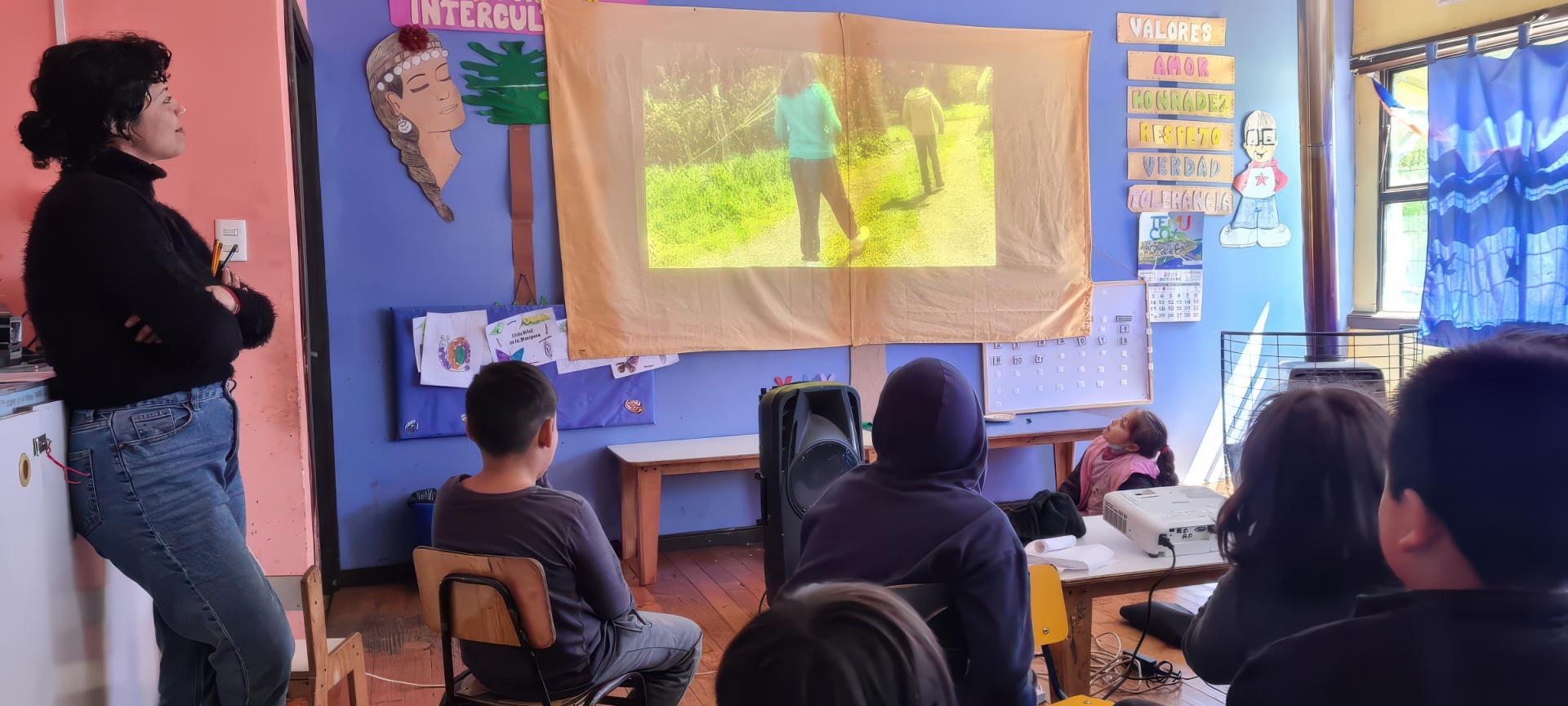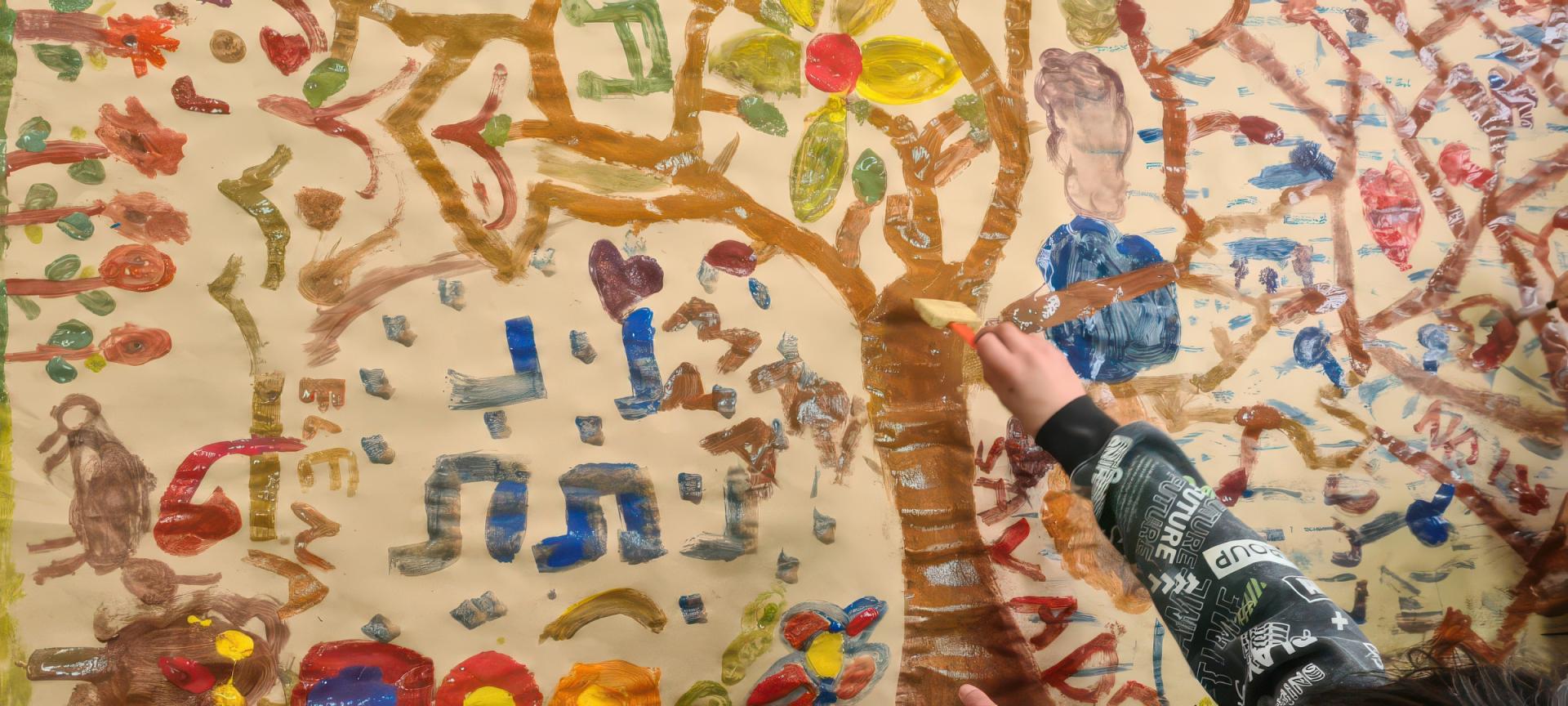
My name is Eli Huehuentru. I am a 28-year-old Mapuche artist, part of the J.H. community Xomio, Padre Las Casas (PLC), Gulumapu-Wallmapu, Mapuche territory in resistance in Chile. My relationship with music began at the age of nine when I had a violin that came into my hands through a social orchestra project called FOJI in 2004 in the PLC community. There, I learned how to play the violin and share music with other children in the PLC children’s orchestra. At the age of 12, I began to teach violin workshops in a rural school in a neighboring Mapuche community, where I worked with a small group of children my age and younger. Rural areas do not have the same access to artistic education or spaces where creativity is encouraged as urban areas, and I understood that I had the possibility of sharing what I had learned with my peers.
As I grew up, I participated in different cultural spaces. Music gave me the opportunity to travel within and outside of the country, but each year the idea was to return to the schools in the communities to share with our people something of what I learned or a little of the music. These acts encouraged me to reflect on the responsibility we had as artists to hold space for the visions and feelings that have always been present in our communities but were rarely expressed in the classrooms, stages, theaters, galleries, or other public arenas.
The project, “Creative Workshops in Rural Schools,” was born as an initiative supported by the Cultural Survival Indigenous Youth Fellowship, thanks to the collaboration with Pipi Villadangos and Isaak Brand. Villadangos is a 25-year-old dancer and transdisciplinary artist from the Province of Buenos Aires who lived for two years in Gulumapu. For him, teaching involves listening and learning and perhaps inventing something new together. He has studied and worked with the body since he was 11 years old through dance, anatomy, and performance. At the age of 19, he left the continent to continue searching. Brand is a visual artist, filmmaker, performer, and social educator with special training in artistic methodologies for psycho-social intervention in contexts of sociocultural-socio-economic vulnerability. He is the co-creator of the visual arts and performance project INCHIW, and part of the contemporary creation and culture space, Temuco.
The development of our project proposed cycles of creative workshops in three rural schools in Gulumapu, Wallmapu. Most of the groups were integrated, so we were faced with the challenge of generating appropriate materials for children from ages 6 to 13. The workshops were held weekly for one month and included explorations in sound, visual arts, movement, and audiovisuals, culminating in a celebration. During these days in the schools, we understood the need to establish connections with the participants. In particular, we looked for activities in which the children could express their creativity while giving voice to their everyday experiences. As the workshops progressed, they were continually invited to express their ideas, thoughts, and feelings.
One of the reflections that accompanied this process for us as workshop facilitators was that of space, or the lack of space, that can exist in Mapuche childhoods, resulting from colonialism, racism, and capitalism in the imposed territory called Chile. From this place of recognition, we sought to offer or invite more participation for certain children in whom we noticed behavior more affected by this internalized racism. By becoming more present in schools, we noticed how the approach to our vision as Mapuche people gave the children more autonomy and power with which to face their experiences. This could be seen through certain differences that emerged between the schools and whether their sources of learning were more or less, connected to culture and the arts.
We decided to use a methodology that encompassed play, creation, and relaxation in which children could be introduced to an artistic discipline by watching videos, listening to music, or seeing live dance performances; to present an experience in which they could engage their senses and reflect on it. All of the material from the sessions was recorded and archived on video or in photos, and on the next day, the children could see themselves carrying out that artistic discipline and expanding their sense of possibility by seeing themselves in a new action. Audiovisual files were created completely by the children in the workshops as interviews that they guided, narrated, and recorded themselves, rotating roles to experience all of the activities.

Students at a screening of their audiovisual projects created in the workshop organized by Eli Huehuentru.
It was touching for us to see that in many cases, these activities were totally new for the children and may have planted seeds of aspiration and interest in some of the students. We see these instances as a driving force to open up in children the idea of what is possible for them in the present and in the future. This was a topic of reflection at the closing of the workshops, with the purpose of encouraging the children to imagine and believe in as many possibilities as they desire.
Autonomous education of Indigenous Peoples is a critical basis for the construction of identity of children and young people. Their sense of identity is strengthened in the wisdom, stories, and lived experiences in the home, but in many cases, young people are being denied this form of education. The creative experiences that we shared with the students in the three Mapuche schools that we visited sought to integrate the learning cycle with the unique culture of the territory. We invited children to indulge in the curiosity of childhood to cultivate an appreciation, interest, and attachment to the Mapuche ways of perceiving the world in such a way that included the notions of identity and ancestral vision that each Nation values when living in relation to their territory.

Collaborative painting by students in the workshop organized by Eli Huehuentru.
Our team of teachers was especially successful in establishing a non-hierarchical relationship with the children; we saw ourselves more as companions or moderators of their experiences. All of the proposed activities were framed so that all of the exploration, themes, developmentment, and content were carried out by the children. The knowledge was transmitted from our diverse experiences, encouraging inclusion, respect, and care. We gave special importance to the process, accepting the final product without further demands. Artistic creation was presented and offered to children as a means of expression available in their interests, based on observation and expression in their daily lives, for the respect and happiness of Mapuche childhoods, and for the territorial resistance of the ancestral peoples. Free Wallmapu!
--Eli Wewentxu Huehuentru (Mapuche) is a Cultural Survival Youth Fellow.
Top photo: Students writing at one of the creative workshops organized by Eli Huehuentru.
